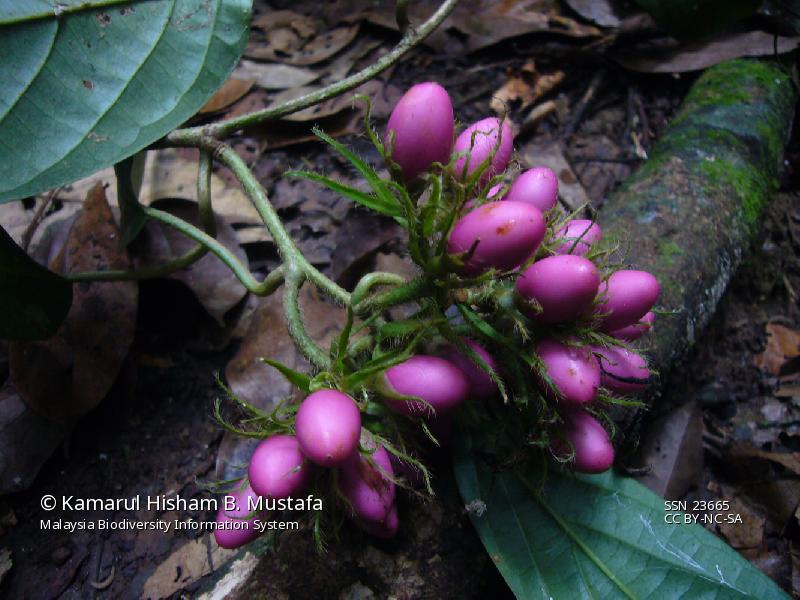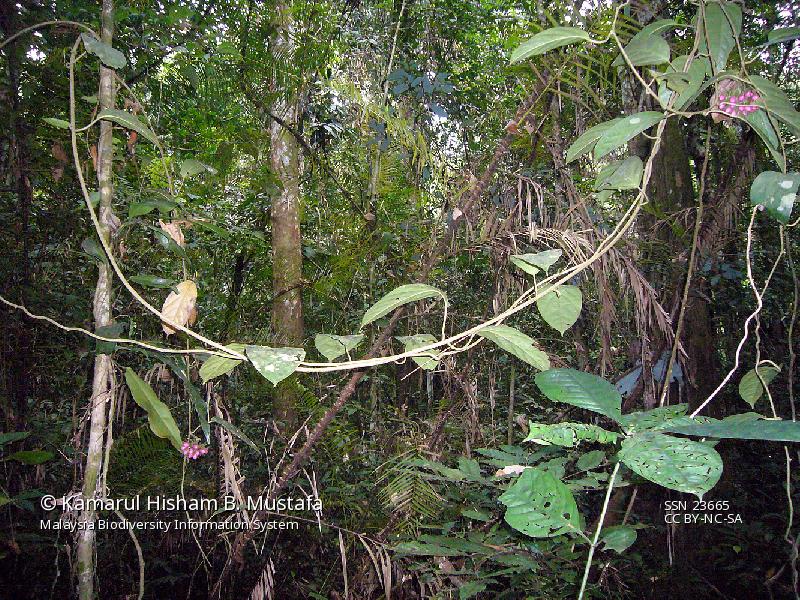
The genus Argyreia derived from Greek, "argyreios", meaning silvery, refers to the shiny hairs on the underside of the leaves of some species and the epithet name "maingayi" refers to Alexander Carroll Maingay (1836–1869), a surgeon-general and magistrate in-charge of the Melaka jail between 1862 and 1868. He became the Superintendent of the jail at Rangoon, Burma (now known as Yangon, Myanmar) in 1868, where he was murdered a year later during a mutiny by the prisoners. His name is commemorated in several plant names because he made a significant collection of plants in Melaka.
The genus Argyreia belongs to the Convolvulaceae, better known as the morning glory family. Argyreia comprises about 100 species and in the Malesian region, about 45 species have been recorded. They are mainly found in Peninsular Malaysia (c. 13 species), Sumatra (12 species) and the Philippines (10 species) (Wardini, 2003). The genus Argyreia is very similar to Ipomoea, and the two can only be distinguished by the fruits. The fruits of Argyreia are indehiscent, fleshy or mealy berries whereas fruits of Ipomoea are dehiscent dry capsules (Staples & Syahida-Emiza, 2015).
Argyreia maingayi is a liana with fulvous-hirsute twining stems. The leaves are ovate, c. 9–20 cm long and 3.5–11 cm wide, rounded or shortly attenuate (tapering gradually) at the base and strigose (straight, stiff, sharp and appressed) hairs are found along the veins on the lower leaf surface. The inflorescences are densely capitate (in dense heads) and pendulous (hanging or drooping downward) while the peduncles are stout and up to 5 cm long. The bracts are large, up to 4 cm long and persistent. The sepals are long-acuminate, 4.5–6 cm long and the corollas are white with a pink, red or purple stripe in the middle of each lobe. The fruits are ovoid, c. 12 mm long and pinkish in colour. This species occurs in lowland and hill forest up to 1,120 m altitude, on river banks, sometimes on limestone, and in secondary forest. The flowering season is from June through to December while the fruiting season is from November through to July.
Locally, this species is known as akar terong-terong, akar bunga butang, akar ulan gajah, akar k'lupus in Melaka; akar sumulut in Negeri Sembilan and bunga akar saptu utan in Selangor. The slightly sweet fruits are edible and a decoction of the roots is used externally to treat pain in the bones (Hoogland, 1952; Ooststroom & Hoogland, 1953; Burkill, 1966; Wardini, 2003).
Argyreia maingayi is endemic to Peninsular Thailand and Peninsular Malaysia (all states except Kedah and Penang) (Staples & Syahida-Emiza, 2015). This species is widespread and common throughout the Malay Peninsula and is categorized as Least Concern (LC) because there is no threat of extinction.

